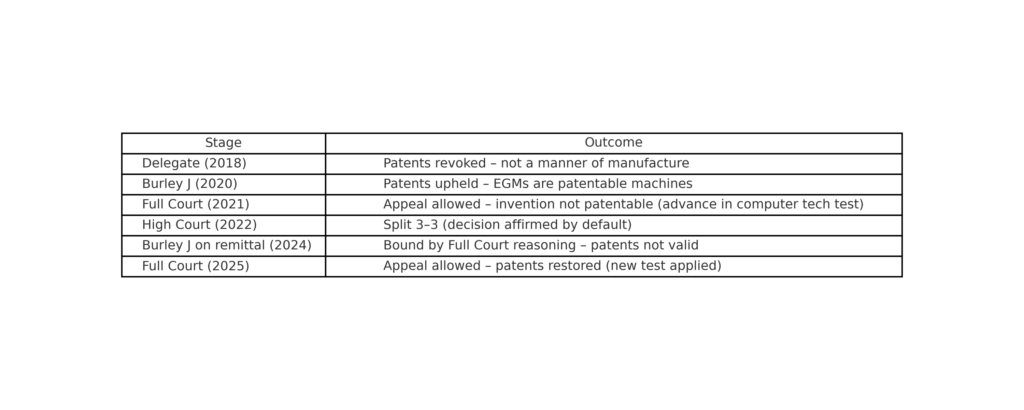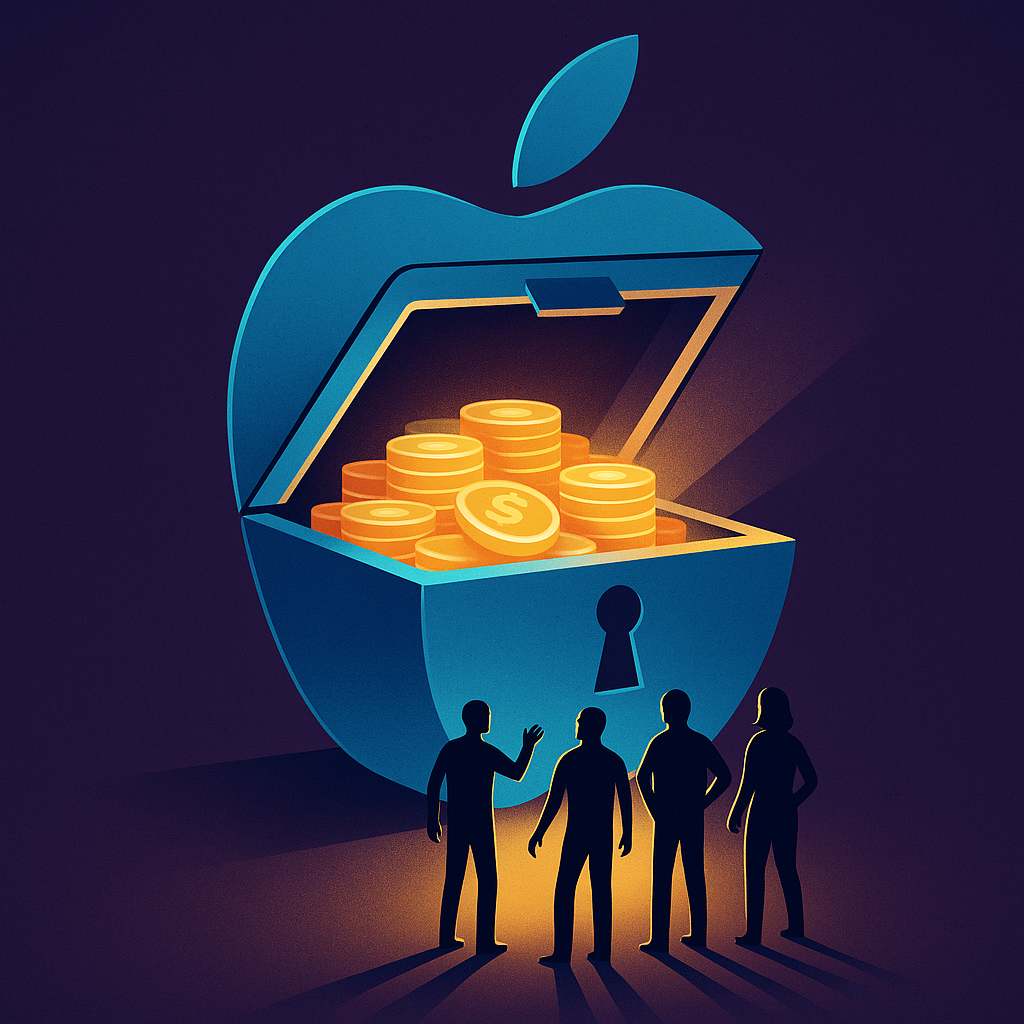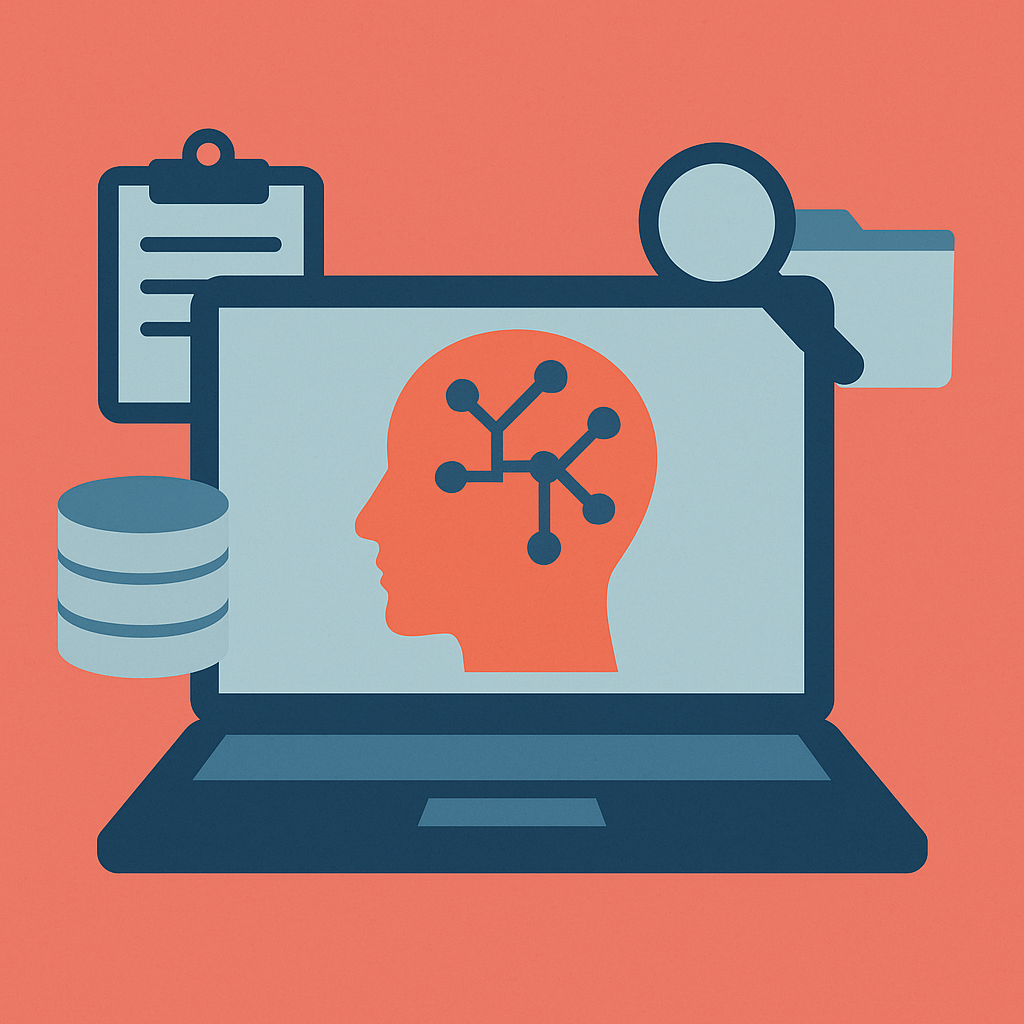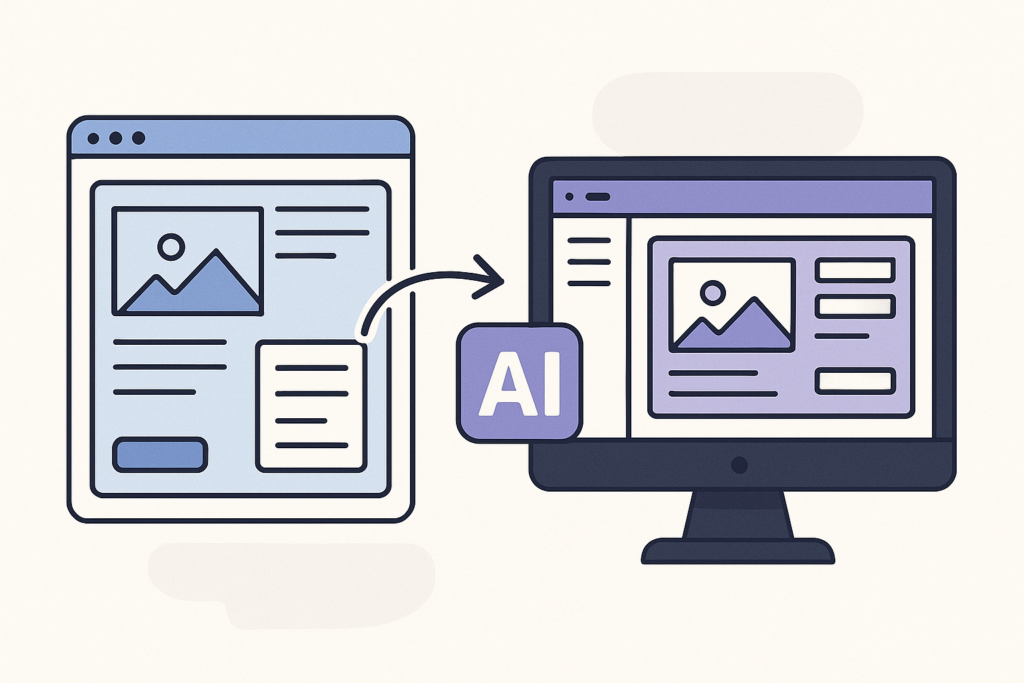Aristocrat’s Jackpot: Full Court Revives Gaming Machine Patents
 When does a slot machine cross the line from an abstract idea to a patentable invention?
When does a slot machine cross the line from an abstract idea to a patentable invention?
After years of litigation, remittals, and even a 3–3 deadlock in the High Court, the Full Federal Court has finally tipped the balance in Aristocrat’s favour.
🎰 The Long Spin
Aristocrat has been fighting since 2018 to keep its patents over electronic gaming machines (EGMs) with “configurable symbols” — feature games that change play dynamics and prize allocation. The Commissioner argued these were just abstract rules of a game dressed up in software. Aristocrat said they were genuine machines of a particular construction that yielded a new and useful result.
The case bounced through:
-
Delegate (2018): patents revoked.
-
Burley J (2020): Aristocrat wins.
-
Full Court (2021): Aristocrat loses (majority invents “advance in computer technology” test).
-
High Court (2022): split 3–3, affirming the Full Court’s result by default under Judiciary Act s 23(2)(a).
-
Remittal (2024): Burley J reluctantly applies Full Court reasoning against Aristocrat.
 Cue the latest appeal.
Cue the latest appeal.
⚖️ The Precedent Puzzle
The Full Court (Beach, Rofe & Jackman JJ) confronted a thorny problem: should it stick to its own 2021 reasoning when the High Court had unanimously rejected that reasoning, even though no majority emerged?
The answer: No.
-
Only majority or unanimous High Court views are binding.
-
But the High Court’s unanimous criticism provided a “compelling reason” to abandon the earlier Full Court approach.
-
The Court found “constructive error” — not blaming Burley J, but recognising the law had to move on.
🖥️ Rethinking “Manner of Manufacture”
The Court reframed the test for computer-implemented inventions:
-
Not patentable: an abstract idea manipulated on a computer.
-
Patentable: an abstract idea implemented on a computer in a way that creates an artificial state of affairs and useful result.
Applying this, Aristocrat’s claim 1 was patentable — and by extension, so were the dependent claims across its four patents. The EGMs weren’t just abstract gaming rules. They were machines, purpose-built to operate in a particular way.
💡 Why It Matters
-
For patentees: This revives hope for computer-implemented inventions beyond “pure software” where technical implementation creates a new device or process.
-
For examiners: IP Australia may need to recalibrate examination practice on software-related patents — the “advance in computer technology” yardstick is gone.
-
For practitioners: This is a case study in how precedent, process, and patents collide. The High Court’s split didn’t end the story — it forced the Full Court to resolve it.
🚀 Takeaway
The Full Court has effectively reset the slot reels. Aristocrat’s EGMs are back in play, and the scope of patentable computer-implemented inventions in Australia looks a little brighter.
Sometimes the house doesn’t win.
 When Epic Games went head-to-head with Apple, the Federal Court found that Apple misused its market power by locking iOS developers into the App Store and its payment system. That was big. But the Anthony v Apple class action takes it a step further: what if Apple has been overcharging Australian developers and consumers for years?
When Epic Games went head-to-head with Apple, the Federal Court found that Apple misused its market power by locking iOS developers into the App Store and its payment system. That was big. But the Anthony v Apple class action takes it a step further: what if Apple has been overcharging Australian developers and consumers for years? When Epic Games took on Apple in the US and Europe, the headlines practically wrote themselves – it was billed as a David-and-Goliath showdown between the Fortnite maker and the Cupertino colossus. Now, the same fight has reached Australian shores — and the Federal Court has bitten into Apple’s walled garden.
When Epic Games took on Apple in the US and Europe, the headlines practically wrote themselves – it was billed as a David-and-Goliath showdown between the Fortnite maker and the Cupertino colossus. Now, the same fight has reached Australian shores — and the Federal Court has bitten into Apple’s walled garden. As AI capabilities become standard fare in SaaS platforms, software providers are racing to retrofit intelligence into their offerings. But if your platform dreams of becoming the next ChatXYZ, you may need to look not to your engineering team, but to your legal one.
As AI capabilities become standard fare in SaaS platforms, software providers are racing to retrofit intelligence into their offerings. But if your platform dreams of becoming the next ChatXYZ, you may need to look not to your engineering team, but to your legal one. Imagine this: you take a screenshot of your favourite SaaS dashboard, upload it to a no-code AI tool, and minutes later you have a functioning version of the same interface — layout, buttons, styling, maybe even a working backend prototype. Magic? Almost.
Imagine this: you take a screenshot of your favourite SaaS dashboard, upload it to a no-code AI tool, and minutes later you have a functioning version of the same interface — layout, buttons, styling, maybe even a working backend prototype. Magic? Almost. The Albanese Government’s plan to restrict under-16s from holding social media accounts is already proving contentious — and now, its one glaring exception has been officially called out. The eSafety Commissioner, Julie Inman Grant, has advised Communications Minister Anika Wells to scrap the carve-out that would exempt YouTube from the new age-gating regime set to kick in this December.
The Albanese Government’s plan to restrict under-16s from holding social media accounts is already proving contentious — and now, its one glaring exception has been officially called out. The eSafety Commissioner, Julie Inman Grant, has advised Communications Minister Anika Wells to scrap the carve-out that would exempt YouTube from the new age-gating regime set to kick in this December.